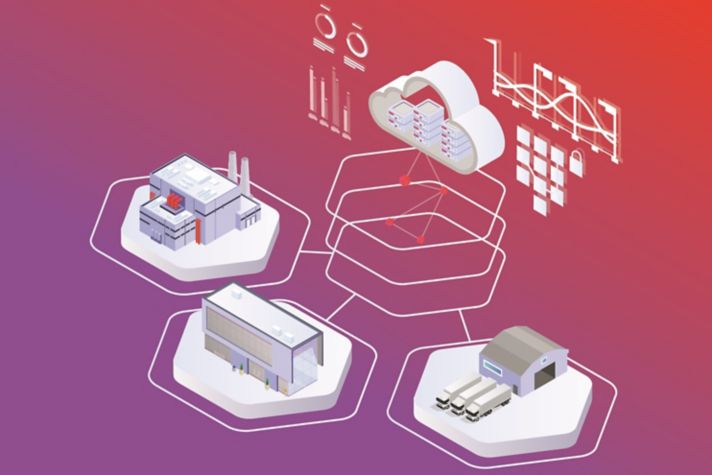The Last Gap in Industrial Digitization – The Deskless Worker
At last check, Industry 4.0 was well on its way, as collected big data has become the digital straw industrial enterprises can spin into gold when combined with the right hardware, software and algorithms. And yet critical data is missing in mapping out what will eventually become an industrial knowledge graph. The culprit? The simple clipboard on-the-ground workers use to collect data during manual inspections and maintenance checks. Often, that data doesn’t get where it needs to go.
These deskless workers, employed in manufacturing plants, refineries, airports, hospitals and more, comprise 80 percent of today’s global workforce (2.7 billion deskless workers).[1] And despite living in the digital world, most still make their rounds with pen and paper in hand.
"Digitizing the industrial workflow of the deskless worker unlocks the predictive meaning in the data they collect,” said Jason Merszei, vice president and general manager for Honeywell Forge for Workers. “It provides the missing link necessary for the workers to be more productive and proactive. They'll be able to make better, more informed decisions and get home safely every night."
[1] Venture Beat
The Cost of Inefficient Data Collection
Manual workflows in oil and gas, mining, transportation and pharmaceutical industries, etc. leverage little of the mobile, cloud and software revolutions of the last 20 years. Why are these deskless workers the last to be digitized?
“Blame it on, ‘It’s how we’ve always done it.’ A seasoned workforce resistant to change. The perceived time and expense of updating systems,” explained Merszei. “Regardless of the reason, if manually collected data isn’t fully integrated into a business workflow, the consequences can be far-reaching.”
These consequences include:
Unplanned downtime
Manual standard operating procedures stand in the way of production growth. They contribute to unscheduled downtime, expensive repairs and insurance expenses, costing industrial enterprises millions in lost revenue.
Missing data
With inspection and maintenance logs as the only paper trail, data can easily be misplaced or incorrectly inputted. There’s no way of tracking if forms are completed. And without a central place to capture and store information, data can’t be aggregated to provide a complete view of operations.
Unsafe work conditions
It’s a harsh reality that industrial conditions can be dangerous. If potential gas leaks or equipment pressure levels aren’t closely monitored, they can result in serious workplace injuries and increased liability costs.
Recruiting challenges
Much of today’s industrial workforce will be retiring in the near future, putting financial pressure on recruiting and training new employees. And when fresh-faced tech university graduates see plant employees clutching clipboards instead of tablets, they may be difficult to recruit.
Compliance and regulation issues
Increasing global regulations are adding complexity to standard procedures. Compliance has never been harder, and the stakes — fines, shutdowns and the loss of customers — have never been higher.
A lost competitive edge
Incorporating IIoT industry-wide is no longer a “nice to have.” It’s quickly becoming table stakes. Enterprises that don’t digitally transform may slowly be left behind by savvier competitors.
The Realities of a Paperless World
Businesses engaged in workflow transformation will see significant enhancements in their operations, providing a path to the benefits of Industry 4.0.
A centralized data repository.
Workers, armed with tablets and mobile devices, can electronically capture data that’s automatically fed into a single cloud-based system. Connected platforms and constantly updated data provide a digital view of what’s happening throughout an operation in near-real-time.
"For the first time, there’s a master repository of all collected data — a workflow history businesses can access for forensics, predictive analytics and compliance."
Every worker an expert. Digital workflows rely on interconnected platforms that talk to each other and gain self-awareness (machine learning). They offer a feedback loop of increasingly intelligent insights to help worker complete tasks more effectively. They also drive continuous improvement.
Predictive analytics vs. reactive solutions. AI models built from collected data and predictive analytics drive proactive business decisions. Operators don't have to wait for a machine to break down — they’ll receive warnings well in advance and can respond quickly to avoid production losses, safety issues and machinery wear-and-tear.
All workers accounted for. With digital record keeping and personal sensors in oil and gas refineries, for example, when a gas leak alarm goes off, managers will know exactly where workers are, if they’re safe and whether they have to be removed from a designated area.
Fewer regulatory fines. Proving that operations are conforming to government regulations is a lot easier when data is current, correct and centrally housed.
"This powerful transformation will help businesses realize the benefits of Industry 4.0 — the new way to manufacture goods by contributing to the industrial knowledge graph,” explained Merszei.
The Future of the Industrial Knowledge Graph
Fast forward to a future where clipboards and paper forms have gone the way of the floppy disk, and industrials will have a fully realized, 360-degree view of their operations. Where can it take them?
Imagine industrial enterprises being able to squeeze greater efficiencies out of already efficient operations. Being alerted to the earliest hair trigger malfunction in a pipeline, a generator or an engine. Fewer stories about a gas explosion, a system shutdown or a plane crash. And you’re beginning to understand the potential of an industrial knowledge graph.
“If you build a knowledge graph for a refinery,” explained Aravind Padmanabhan, Honeywell Vice President and CTO, Connected Worker, “you can query it to say, ‘When was the last accident or the last gas leak? What happened? What action was taken? That’s a hugely powerful tool for operations. It’s something that can’t be done easily today. It requires digital data and the ability to connect data from different sources into one graph.’”
With a truly connected business and connected workers, interdependent platforms create an integrated and end-to-end context. The system is constantly learning.
Data-hungry AI. Every time a worker enters data into a centralized workflow platform, it enriches the system because it’s connected to everything else. Machine learning models provide insights to enhance the graph, which yields even better models. As more data is collected, the context that can be created with that data grows exponentially.
Building AI-based industrial solutions relies on understanding what a problem looks like in the early stages, not when it’s critical. “It’s impossible to make a model to predict when a machine will break down when we don’t have data on what a break looks like,” said Padmanabhan. “The more predictive models can be, the more productive and safe workers, and entire enterprises, will become.”
“Google built the search graph. Facebook built the social graph. At Honeywell, we want to create the industrial knowledge graph,” said Padmanabhan. “This is my personal dream.”
The search for ROI. Any business considering a digital industrial workflow would love solid ROI data to support their decision. “Unfortunately, there is no accurate formula, and every case is unique,” Padmanabhan explained.
“But enterprises can expect strong business outcomes through costs savings of worker optimization and continuous improvement. Fewer failures, decreased downtime and reduced training costs. The value of knowing workers completed their rounds. And reduced compliance-related fines and audits. Make the move and the savings will come.”
Gartner supports this optimistic outlook. Their IoT survey data from August 2018 reveals that 80 percent of organizations adopting IoT report achieving better-than-expected results from their IoT projects.[3]
Honeywell End-to-End Solutions
Deep domain knowledge. “At Honeywell, we have decades of critical domain expertise and visionary IoT connected expertise across nearly all industries,” explained Padmanabhan.
“We understand the nitty-gritty of the verticals and each worker’s job.”
These insights are especially relevant in oil and gas refineries. “Honeywell Process Solutions builds sensors and controls,” Padmanabhan said. “Our UOP business develops the refining processes. Our Industrial Safety Group builds the gas detectors and safety equipment. And at Connected Worker, we help create the digital workflows. Imagine how much content all of this provides for a refinery. With all this domain knowledge, we can build the knowledge graph, filling a major gap in end-to-end operations.”
Solutions like these will drive continuous improvements throughout an entire enterprise’s ecosystem. And start creating a safer, smarter workplace for the 2.7 billion deskless employees.
Ready to Learn More? See what Honeywell can do for your enterprise. Request a consultation.
[3] The Evolution of IoT and Its Impact on Adopters and Technology Providers, A Gartner Trend Insight Report, 18 September 2018




